Research Article Open Access
White and Brown Rice are Equally Satiating and More Satiating than Glucose Beverage
| Xiaochun Snow Wang1, Mollie O’Neill1, William Thomas2 and Joanne Slavin1* | |
| 1Department of Food Science and Nutrition, University of Minnesota, 1334 Eckles Avenue, Saint Paul, Minnesota 55108, USA | |
| 2Division of Biostatistics, School of Public Health, University of Minnesota, 420 Delaware St SE, Minneapolis, MN 55414, USA | |
| Corresponding Author : | Joanne Slavin Department of Food Science and Nutrition University of Minnesota, 1334 Eckles Avenue St. Paul, MN 55108, USA Tel: 612-624-7234 Fax: 612-625-5272 E-mail: jslavin@umn.edu |
| Received October 21, 2013; Accepted December 12, 2013; Published December 14, 2013 | |
| Citation: Wang XS, Neill MO, Thomas W, Slavin J (2013) White and Brown Rice are Equally Satiating and More Satiating than Glucose Beverage . J Obes Weight Loss Ther 3:201. doi:10.4172/2165-7904.1000201 | |
| Copyright: © 2013 Wang XS, et al. This is an open-access article distributed under the terms of the Creative Commons Attribution License, which permits unrestricted use, distribution, and reproduction in any medium, provided the original author and source are credited. | |
Visit for more related articles at Journal of Obesity & Weight Loss Therapy
Abstract
Liquid meals may evoke weaker appetite signals than calorie-matched solid foods. The objective of this study was to compare the satiety response of white rice and brown rice (whole grain). Additionally, we measured the satiety response of white rice and brown rice compared to a calorie-matched glucose beverage. Each participant (n=20) completed three conditions, presented in random order. On three mornings, separated by at least one week, fasted subjects consumed either 400 kcalories of white rice, brown rice or glucose beverage for breakfast. Visual analogue scales (VAS) were used to assess hunger, satiety, fullness, and prospective food intake at baseline, 15, 30, 45, 60, 90, 120, 180, 240 minutes after breakfast. Gastrointestinal tolerance was assessed at 180 minutes after breakfast and over the 24 hours following each visit using questionnaires. Ad libitum lunch was provided at 240 minutes, measured by calorie intake. 24-hour food intake was also recorded by food diary. Satiety differed significantly among treatments, with increased satisfaction and fullness seen with both white rice and brown rice compared to glucose beverage. Ad libitum lunch food intake and 24-hour food intake did not differ significantly among treatments. Both white rice and brown rice improve satiety and decrease feelings of hunger more than calorie matched glucose beverage. Enhanced satiety did not translate into reduced food intake at lunch, supporting that many factors may override physiological hunger.
| Keywords |
| Rice; Satiety; Food intake; Whole food; Whole grains |
| Introduction |
| Rice is the staple cereal for over half the world’s population [1]. White rice is produced by removing the hull and bran layer of the rough rice kernel during milling [2]. Ninety percent of the dry milled rice is starch; protein and lipid are also major constituents. In brown rice, only the hull layer is removed, leaving the germ and bran layer along with the starchy endosperm, retaining dietary fiber, proteins, essential fatty acids and various vitamins, iron, magnesium, and polyphenols [3]. Brown rice is a whole grain and contains more fiber than white rice. |
| Macronutrient content, especially protein, and fiber content of foods and beverages are thought to enhance satiety, although results are inconsistent. Satiety studies comparing calorie-matched solid and liquid foods also give mixed results. Stull et al. [4] conducted a two-day trial with 24 older adults who consumed a solid food (nutrition bar, 559 kcal) or a liquid food (nutrition beverage, 559 kcal). They reported a 13.4% increase in food intake as well as increased hunger at 2 hours after the liquid treatment compared to solid treatment. |
| Flood-Obbagy and Rolls [5] compared the effect of consumption of fruit in different forms on energy intake and satiety at a meal. Results showed that eating an apple reduced lunch energy intake by 15% compared to no preload. Fullness ratings differed significantly after preload consumption with apple>applesauce>apple juice with added fiber and without added fiber>control, which suggested the effects were due to the food form rather than fiber content. Willis et al. [6] found longer gastric emptying time in calorie and fiber matched solid meal versus liquid meal, and observed reduced hunger feelings, improved satisfaction, and fullness of solid breakfast (oatmeal, fruit, nuts) compared with liquid breakfast (fruit juice with added fiber and milk). |
| Satiety studies with whole grains are limited with most positive effects seen with rye. Rye kernel breakfast increased satiety in the afternoon, an effect linked to food structure [7]. Whole grain rye breakfast was linked to sustained satiety during three weeks of regular consumption [8]. Satiety studies comparing whole grain brown rice and refined grain white rice have not been published. Rice was included in a study of a combination of grains and pulses [9]. Protein, fiber, and foods with greater water/volume leading to low energy density were most effective in delaying hunger. |
| The objective of this study was to compare the satiety response of calorie-matched white rice, whole grain brown rice and glucose beverage. Additionally, we examined whether consumption of these preloads changed food intake at lunch. |
| Methods |
| Subjects |
| Twenty healthy subjects (10 men and 10 women) aged 18 to 36 years, with BMI between 18 and 27, were included in the study. Premenopausal women attended study visits only during the follicular phase of their menstrual cycle. |
| Exclusion criteria: current smokers; did not regularly eat breakfast; had food allergies; were vegetarians; had long-term illness (diabetes, kidney disease, liver disease, metabolic syndrome, gastrointestinal conditions that may affect digestion and absorption, etc); had recent bacterial infection (<2 weeks); had weight loss or gain more than 5 kg in prior three months (intentional or unintentional); had history of drug or alcohol abuse in prior 6 months; took medications for weight loss, lipid-lowering, anti-hypertension or anti-inflammation; had concurrent or recent (within 30 days) intervention study participation; women who were pregnant or lactating; women who did not have a regular menstrual cycle; and people who were on a high fiber diet. |
| Treatments |
| Subjects received each of the three treatments on a separate visit in a crossover design that was balanced for first-order carryover effects. The three test breakfasts were: glucose drink (glucose, Now Foods®, mixed with non-caloric Koolaid® flavoring, dissolved in water), white rice (enriched parboiled rice, long grain, Safeway Inc.) and brown rice (natural whole grain brown rice, Uncle Ben’s®). All the treatments contained 400 kilocalories, and had nearly identical macronutrient content. White rice and brown rice were prepared by adding water to dry rice, and cooked (10 minutes for white rice, 18 minutes for brown rice) in a rice cooker until ready. The breakfast was served with 355ml of non-caloric water, black tea (Earl Grey, R.C. Bigelow Inc., Fairfield, CT) or coffee (Folgers Original) made according to package instructions. Participants were given the same drink for each of their visit sessions. |
| Study session |
| The day before each visit, participants were given instructions to follow a low fiber diet and to avoid alcohol or excessive physical exercise for 24 hours. They were required to fast at least 12 hours before study visit with nothing to eat or drink except water. Subjects were instructed to maintain current exercise level and not to initiate a weight loss program for the duration of the study. |
| The visit started at 7:00 am on the testing center of University of Minnesota, where subjects could read or work quietly during the fivehour session. Upon arrival, subjects were instructed to take baseline breath sample and complete the computerized Visual Analogue Scales (VAS) for baseline subjective satiety feelings. They were then instructed to finish the treatment breakfast within 15 minutes. |
| Subjects used VAS to rate hunger, satisfaction, fullness, and prospective food intake at baseline, 15, 30, 45, 60, 90, 120, 180, and 240 minutes after breakfast, as well as another VAS at 20 minutes after the ad libitum lunch as previously described [10]. In addition, they completed five additional VAS palatability questions including visual appeal, smell, taste, aftertaste and overall pleasantness to rate breakfast and lunch which were at the 30 minute time point and 20 minutes after the ad libitum lunch. |
| They were also given a GI tolerance questionnaire to complete at 180 minutes after breakfast and over next 24 hours after each visit. |
| Subjects were provided an ad libitum lunch at 240 minutes after breakfast. They were asked to finish lunch within a 20-minute period until they felt comfortably full. Portions eaten were weighed and measured for energy content. Subjects received a 24-hour food diary together with GI tolerance questionnaire to complete for next 24 hours after each visit. |
| The University of Minnesota Institutional Review Board Human Subjects Committee approved all aspects of this study. |
| Visual analogue scales (VAS) |
| A computerized visual analogue scale (VAS) assessed appetite satisfaction. Each VAS scale was a one hundred mm long horizontal line with extreme opposing description at each end. Four satiety ratings questions were hunger - how hungry do you feel? (0=I am not hungry at all, 100=I have never been more hungry); satisfaction - how satisfied do you feel? (0= I am completely empty, 100=I cannot eat another bite); fullness - how full do you feel? (0= Not at all full, 100=Totally full); prospective food intake – how much do you think you can eat? (0= Nothing at all, 100=A lot). |
| At the 30-minute time point and 260-minute time point (20 minutes after the ad libitum lunch) five extra questions were displayed to rate palatability of breakfast and lunch. The questions included visual appeal, smell, taste, overall pleasantness (0=Good, 100=Bad), and aftertaste (0=Much, 100=None). |
| Gastrointestinal tolerance |
| Gastrointestinal tolerance questionnaires were completed at 180 minutes after treatment and over next 24 hours after each visit [11]. Subjects assessed the degree of their gastrointestinal activities on a numerical scale from 0 to 10, (0=Not at all, 10=Excessive). Questions included gas, bloating, abdominal cramps, stomach noises, stomach pain, diarrhea and constipation. In the 24-hour record, three additional questions are added: what is your stool frequency today? (From less than 1 time to more than 3 times); have you had to alter your activities because of your bowel function? (Never, rarely, sometimes, most of the time, always); list any additional symptoms experienced and the severity of the symptoms (severity from 0=not severe to10=severe). GI symptoms were summarized as the sum of scores on the questionnaire. |
| Ad libitum lunch |
| At 240 minutes after treatment, lunch was provided as a buffet of French bread pepperoni pizza (Red Baron®) and 500 mL of bottled water (Aquafina®), containing about 1520 kilocalories, more than adults would normally consume at one sitting. Subjects were asked to finish lunch within 20 minutes and stop when they felt comfortably full. Pizza was weighed before and after eating to analyze the amount and energy consumed. |
| 24-hour energy intake |
| Subjects recorded their detailed food and beverage intake over the next 24 hours after each session [12]. Portion guidelines and examples were provided to record time, food eaten, amount, food description and preparation method. Nutrition Data System for Research (NDSR, 2011) software was used to analyze the nutrition information of all the meals, including total kilocalories, macronutrient and fiber content. |
| Data analysis |
| Subject demographic characteristics were presented by gender as mean ± standard deviation. Repeated VAS responses at a study visit were summarized as area under the curve (AUC) by the trapezoidal rule, for each outcome separately. GI symptoms were combined using the sum score of all the symptoms. Treatments were compared using mixed-effects linear models with treatment, gender, and visit as fixed effects, and with a random intercept for each subject to model correlation between repeated measurements from the same subject. For each outcome, equal carryover and treatment-visit interaction were checked by these mixed-effects models, and were judged not significant. Outcomes were reported as mean ± SEM. Significant difference was determined by two sided test when p<0.05. Statistical analysis was performed by SAS version 9.2. |
| Results |
| Participant characteristics |
| Twenty healthy subjects, ten males and ten females participated in the study. Overall mean age was 26.0 ± 6 years, and mean BMI was 23 ± 2; there were no gender differences in age or BMI. |
| Satiety: visual analogue scales |
| Satisfaction and fullness AUC were higher after both white rice and brown rice compared with glucose beverage; hunger and prospective food intake were lower after both white rice and brown rice compared with glucose beverage (Figures 1-4). There were no differences between the two rice breakfasts. |
| Palatability of treatment |
| The glucose beverage had higher aftertaste and less pleasantness than both rice breakfasts. There were no differences among breakfasts in visual appeal, smell or taste. |
| Palatability of ad libitum lunch |
| The lunch was identical after each test breakfast, and there were no differences in visual appeal, smell, taste and aftertaste. Pleasantness was lower after consuming brown rice than white rice and glucose beverage. |
| Ad Libitum lunch and 24-hour energy intake |
| Overall, there were no significant differences for ad libitum lunch food intake (p=0.34) and 24-hour food intake (p=0.92) among treatments (Table 1 and Figure 5). |
| Gastrointestinal tolerance |
| Reported gastrointestinal side effects were minor with no severe symptoms or adverse side effects. At the test session, no differences were reported for overall GI tolerance (Table 1). GI tolerance for white rice and glucose beverage differed significantly at 24 hours (p=0.026). The association between change in H2 and 24-hour GI-score was not significant. |
| Discussion |
| When compared to a glucose beverage, solid food as either white rice or brown rice offered greater satisfaction and fullness, decreased hunger feelings and perceived prospective food intake over four subsequent hours. These results agree with other studies suggesting that liquids elicit weaker satiety signals than solids [13]. In a previous study of 58 healthy adults, researchers found after subjects ate a calorie matched apple, hunger ratings were reduced and fullness ratings were increased significantly compared to two kinds of apple juice (with added fiber or without added fiber) (Flood0Obbagy & Rolls, 2009). Another study of 14 healthy women consuming calorie and fiber matched solid breakfast (oatmeal, fruit, nuts) and liquid breakfast (fruit juice with added fiber and milk), reported improved satisfaction and fullness after the solid meal compared with the liquid meal [6]. |
| However, we observed no difference in satiety between white rice and brown rice. These two types of rice have similar macronutrient content, while the serving of brown rice had 2 more grams of dietary fiber and 2 more grams of fat than the serving of white rice. It is unlikely that this minor difference in macronutrient composition would affect satiety ratings. Mean indication of hunger and desire to eat were significantly lower following a solid compared to a liquid meal, even though the test liquid meal had higher protein, higher fiber, and lower fat content [14]. Physical state of food (i.e. solid versus liquid) might be a stronger regulator than macronutrient composition for satiety. |
| Although VAS satiety ratings were higher with solid food, we found no corresponding significant difference in subsequent ad libitum lunch and 24-hour food consumption. Thus, satiety measures induced by the calorie-matched solid meal did not translate into reduced energy intake at either the lunch meal or throughout the subsequent day compared with liquid meal. Our study along with other [15,16] find enhanced satiety does not translate into reduced subsequent food intake or cumulative intake throughout the remainder of the day, suggesting that many factors may override physiological hunger. |
| Even though lunch consumption was not statistically different [white rice (887 kcal), brown rice (900 kcal) and glucose beverage (959 kcal)], such differences if persisting over time, might be clinically significant. In a long-term study, calorie matched carbohydrate loads were delivered as liquid (soda) and solid (jelly beans) outside lab settings [17]. After two 28-consecutive-day sessions for each treatment, significant reduction of free feeding intake was seen after the solid period prior to baseline but not during the liquid period. Also, body weight and BMI increased significantly at the end of liquid load period compared to study entry. This finding demonstrated that liquid carbohydrate might promote positive energy intake over the long term. |
| Several studies report that food form stimulated different metabolic responses including endocrine hormone release which could control appetite sensations and influence short-term food intake [18]. Ghrelin concentrations were significantly lower in solid food form than liquid form [19] whereas a reversed relationship was observed in insulin and glucose level when comparing rice and orange juice. Willis et al. [6] confirmed that slower gastric emptying time is associated with greater satiety. |
| The cognitive effects of food form on satiety and energy balance, using solid food (cherry flavored gelatin cubes) and liquid food (cherry flavored unthickened beverage) was explored [17]. Fifty two healthy adults consumed four preloads: oral liquid/perceived gastric liquid (LL), oral liquid/perceived gastric solid (LS), oral solid/perceived gastric liquid (SL), or oral solid/perceived gastric solid (SS). They also confirmed that faster gastric emptying times were significantly associated with greater energy intake after consumption of perceived gastric liquid preloads. Furthermore, energy intake was dramatically higher when perceived gastric-liquid preloads were consumed than when perceived gastric solids were consumed. |
| Palatability of food has a positive association with hunger and subsequent food [19]. The glucose beverage of our study was less palatable for overall pleasantness than white rice (p=0.056) and brown rice (p=0.038), with more aftertaste than both types of rice (p=0.001). This observation is consistent with another study that the palatability score of solid food was rated higher than the liquid form [20]. The least palatable foods are the most satiating when the composition is balanced [21]. |
| Breath hydrogen was measured because of the link with fermentation of dietary fiber in the large intestine. The difference found here was that the mean change of breath hydrogen in white rice was significantly lower than glucose beverage. In addition, GI tolerance for white rice and glucose control also differed significantly at 24 hours. Greater gastrointestinal symptoms were reported during a high resistant starch diet that suggests that resistant starch may have effects comparable with fermentable fibers [22]. Breath hydrogen is negatively related with glucose response and gastric emptying rate [23]. |
| Conclusion |
| Our findings support that food form is an important signal for satiety response. Both white and brown rice were more satiating than glucose drink. Despite the enhanced fiber and whole grain content of brown rice, there were no differences between the 2 types of rice in satiety response. Perhaps the old concept of “complex carbohydrates” is our best explanation for the enhanced satiety effects of both types of rice over glucose beverage. |
| Acknowledgements |
| XSW recruited subjects, conducted the study, and wrote the first draft of the results, MO assisted in subject recruitment and study organization and measured the breath hydrogen samples, WT designed the study and completed the statistical analyses, JS designed the study, obtained the funding for the study, and revised the manuscript. |
| This research was supported by The Rice Foundation. |
| Trial registration: This trial was registered at clinicaltrials.gov as NCT01508975 |
References
- Khush GS (1997) Origin, dispersal, cultivation and variation of rice. Plant Mol Biol 35: 25-34.
- Zhou Z, Robards K, Helliwell S, Blanchard C (2002) Composition and functional properties of rice. International Journal of Food Science and Technology 37: 849-868.
- Itani T, Tamaki M, Arai E, Horino T (2002) Distribution of amylase, nitrogen, and minerals in rice kernels with various characters. J Agric Food Chem 50: 5326-5332.
- Stull AJ, Apolzan JW, Thalacker-Mercer AE, Iglay HB, Campbell WW (2008) Liquid and solid meal replacement products differentially affect postprandial appetite and food intake in older adults. J Am Diet Assoc 108: 1226-1230.
- Flood-Obbagy JE, Rolls BJ (2009) The effect of fruit in different forms on energy intake and satiety at a meal. Appetite 52: 416-422.
- Willis HJ, Thomas W, Willis DJ, Slavin JL (2011) Feasibility of measuring gastric emptying time, with a wireless motility device, after subjects consume fiber-matched liquid and solid breakfasts. Appetite 57: 38-44.
- Isaksson H, Rakha A, Andersson R, Fredriksson H, Olsson J, et al. (2011) Rye kernel breakfast increases satiety in the afternoon - an effect of food structure. Nutr J 10: 31.
- Isaksson H, Tillander I, Andersson R, Olsson J, Fredriksson H, et al. (2012) Whole grain rye breakfast - sustained satiety during three weeks of regular consumption. Physiol Behav 105: 877-884.
- Pai S, Ghugre PS, Udipi SA (2005) Satiety from rice-based, wheat-based and rice-pulse combination preparations. Appetite 44: 263-271.
- Klosterbuer AS, Thomas W, Slavin JL (2012) Resistant starch and pullulan reduce postprandial glucose, insulin, and GLP-1, but have no effect on satiety in healthy humans. J Agric Food Chem 60: 11928-11934.
- Hess JR, Birkett AM, Thomas W, Slavin JL (2011) Effects of short-chain fructooligosaccharides on satiety responses in healthy men and women. Appetite 56: 128-134.
- Clark MJ, Slavin JL (2013) The effect of fiber on satiety and food intake: a systematic review. J Am Coll Nutr 32: 200-211.
- Leidy HJ, Apolzan JW, Mattes RD, Campbell WW (2010) Food form and portion size affect postprandial appetite sensations and hormonal responses in healthy, nonobese, older adults. Obesity (Silver Spring) 18: 293-299.
- Tieken SM, Leidy HJ, Stull AJ, Mattes RD, Schuster RA (2007) Effects of solid versus liquid meal-replacement products of similar energy content on hunger, satiety, and appetite-regulating hormones in older adults. Horm Metab Res 39: 389-394.
- Almiron-Roig E, Flores SY, Drewnowski A (2004) No difference in satiety or in subsequent energy intakes between a beverage and a solid food. Physiol Behav 82: 671-677.
- Tsuchiya A, Almiron-Roig E, Lluch A, Guyonnet D, Drewnowski A (2006) Higher satiety ratings following yogurt consumption relative to fruit drink or dairy fruit drink. J Am Diet Assoc 106: 550-557.
- DiMeglio DP, Mattes RD (2000) Liquid versus solid carbohydrate: effects on food intake and body weight. Int J Obes Relat Metab Disord 24: 794-800.
- Ranawana V, Henry CJ (2011) Liquid and solid carbohydrate foods: comparative effects on glycemic and insulin responses, and satiety. Int J Food Sci Nutr 62: 71-81.
- Cassady BA, Considine RV, Mattes RD (2012) Beverage consumption, appetite, and energy intake: what did you expect? Am J Clin Nutr 95: 587-593.
- Mourao DM, Bressan J, Campbell WW, Mattes RD (2007) Effects of food form on appetite and energy intake in lean and obese young adults. Int J Obes (Lond) 31: 1688-1695.
- Drewnowski A (1998) Energy density, palatability, and satiety: implications for weight control. Nutr Rev 56: 347-353.
- Muir JG, Lu ZX, Young GP, Cameron-Smith D, Collier GR, et al. (1995) Resistant starch in the diet increases breath hydrogen and serum acetate in human subjects. Am J Clin Nutr 61: 792-799.
- Nilsson AC, Ostman EM, Holst JJ, Björck IM (2008) Including indigestible carbohydrates in the evening meal of healthy subjects improves glucose tolerance, lowers inflammatory markers, and increases satiety after a subsequent standardized breakfast. J Nutr 138: 732-739.
Tables and Figures at a glance
| Table 1 |
Figures at a glance
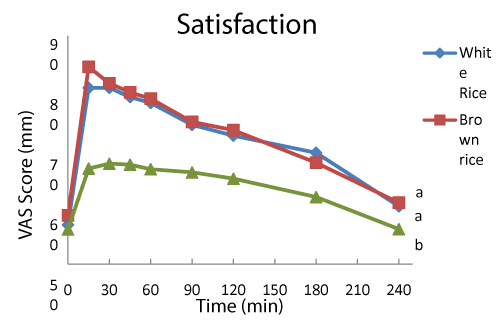 |
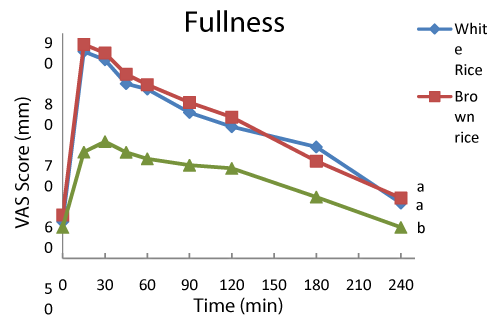 |
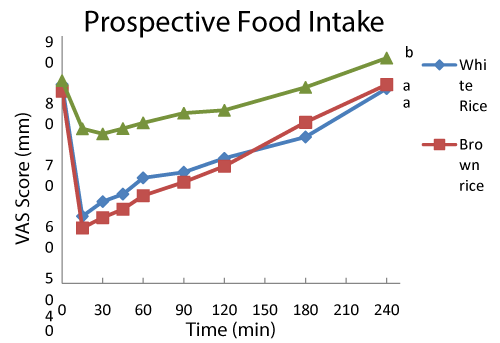 |
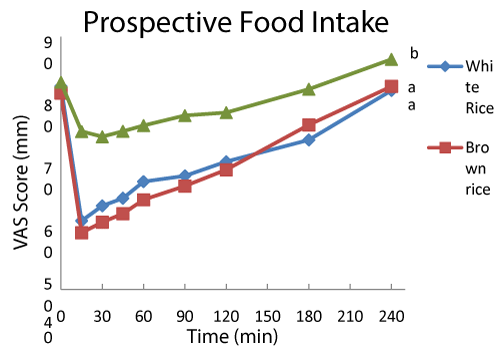 |
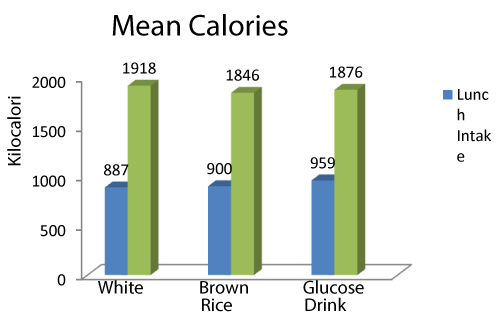 |
| Figure 1 | Figure 2 | Figure 3 | Figure 4 | Figure 5 |
Relevant Topics
- Android Obesity
- Anti Obesity Medication
- Bariatric Surgery
- Best Ways to Lose Weight
- Body Mass Index (BMI)
- Child Obesity Statistics
- Comorbidities of Obesity
- Diabetes and Obesity
- Diabetic Diet
- Diet
- Etiology of Obesity
- Exogenous Obesity
- Fat Burning Foods
- Gastric By-pass Surgery
- Genetics of Obesity
- Global Obesity Statistics
- Gynoid Obesity
- Junk Food and Childhood Obesity
- Obesity
- Obesity and Cancer
- Obesity and Nutrition
- Obesity and Sleep Apnea
- Obesity Complications
- Obesity in Pregnancy
- Obesity in United States
- Visceral Obesity
- Weight Loss
- Weight Loss Clinics
- Weight Loss Supplements
- Weight Management Programs
Recommended Journals
Article Tools
Article Usage
- Total views: 16478
- [From(publication date):
December-2013 - Mar 28, 2025] - Breakdown by view type
- HTML page views : 11907
- PDF downloads : 4571
